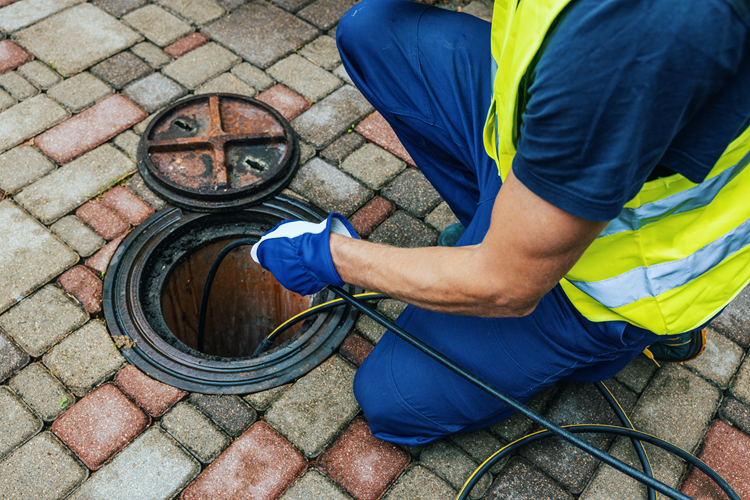Pipe relining is a reasonably straightforward process. In short, pipe relining is an innovative, modern form of sewer pipe replacement that doesn’t require heavy excavation while remaining fast, efficient, and in most cases, affordable.
This simple but to-the-point guide will outline everything you need to know about relining your sewer pipes. We’ll cover all the significant points of the process, from the signs you might need a replacement, to what to expect moving forward.
Signs Your Pipes Need Relining

There’s a few signs that sewer pipes require relining. We’ll go over them now and then get into a detailed, step-by-step explanation of the process itself.
- Sewer Odor: First and foremost, if you have sewer odour in or around your property, it’s a sign you’ve got damaged pipes.
- Backups: Constant backups in every toilet or sink? It’s likely your sewer pipe is to blame. Every toilet experiences the occasional blockage, but when the problem extends to sinks as well, and happens frequently, the pipe that connects to them is the culprit.
- Foundation Problems: When your drain pipes begin to leak sewage, you’ll eventually have more significant problems than the smell. All the excess water under the ground will cause soil to expand and then shrink, which could mean a shift in the foundation, depending on where your space sits and the location of the crack or leak.
- Slow Draining: Slow drains can be a sign that something is wrong with your pipes. A professional plumber can determine if you have a blockage or pipe damage via a camera inspection.
- Uninvited Critters: The less desirable wild critters come with damaged drain pipes, including sewer flies, cockroaches, mice, and rats. Pest control services can remove them, but they’ll be back if your pipes are the problem. If you notice more creepy crawlers, start with the sewer line.
- Extensive Tree Roots: If your commercial building has old trees anywhere on the property, invasive roots can be an issue. Tree roots seek nutrients and head straight for pipes flowing with water. Roots won’t hesitate to take advantage of weaknesses in your lines, often attacking at the joints and drinking until they clog up the entire pipe. While your trees may not be the root cause of your pipe issue, it’s essential to make sure they won’t cause problems in the future.
The Pipe Relining Process

Pipe relining is also referred to as cured-in-place pipe lining or epoxy pipe lining. It’s a cost-effective, fast, efficient sewer repair method that’s entirely trenchless and typically convenient. The pipe relining process will result in a brand new pipe that sits inside the old one, and this is how it works.
- Your professional commercial plumber will inspect your pipe with a sewer camera or CCTV. This step is necessary to determine the extent and location of the damage.
- Next, it’s time to clean the pipes using a pipe-clearing method like hydro-jetting to restore the line to its original size. Sewage and debris can easily block a pipe, decreasing its size and the amount that can flow through it.
- Once the pipes are clean, the pipe relining process can begin. Your plumber will fill a new pipe with epoxy resin, essentially turn it inside out, and insert it into your old pipe. Once the new line is in place, it’s inflated and heated via steam, air, or LED blue light so the epoxy fuses, or cures, to the old pipe.
Your pipe relining can fall into two categories; repair and replacement. When the whole length of the pipe is lined, it’s a replacement. If you only need new lining in one section, it’s a repair. Lining the entire pipe from start to finish is like installing a new pipe without excavation.
It’s important to note that, on some occasions, drain pipes are damaged too severely to use a trenchless method like water pipe relining. Plumbers can’t fix collapsed or improperly sloped pipes with a reline. If it’s determined that either of these issues, among others, is the reason for your sewer pipe problems, you’ll have to use traditional trenching methods.
The Benefits of Pipe Relining
In conjunction with pipe relining, a reputable plumber can deliver fantastic results and many benefits that property owners love.
- Non-Invasive: Pipe relining doesn’t require digging up your sidewalks, parking area, or your property. You can go about your day like normal.
- Speedy: Pipe relining is a relatively quick process as long as no unforeseen extensive damage is found during the inspection.
- Permanence: Pipe relining can last for decades, primarily when adequately maintained. The process creates a stable, environmentally friendly, cost-effective pipe replacement that will last for decades. While it’s still important to have your pipes cleaned and checked at the first sign of an issue, pipe relines truly stand the test of time.
Find Pipe Relining Services Near You
It can be overwhelming and scary to run into sewer pipe issues, especially when you’re unsure how damaged the pipes are and how much the problem will cost. Luke Ginger Plumbing has a team available around the clock, so we can assess your situation over the phone or on-site if necessary.
Your property or commercial space doesn’t have to shut down or lose business due to sewer line malfunctions, and our 24/7 services will ensure that your lines get the attention necessary as soon as possible. If you think your pipes are great candidates for relining, or you need a professional opinion, don’t hesitate to reach out to ask about our drain and pipe relining services. Call today!
